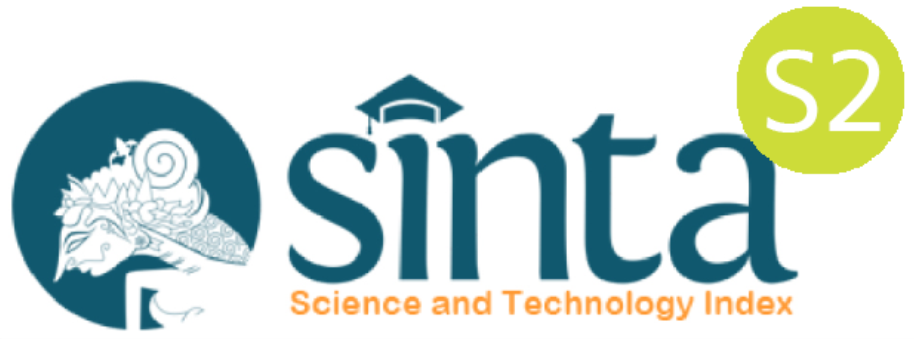PROFIL SELF EFFICACY SISWA CLIMBER TERHADAP PERMASALAHAN MATEMATIKA LEVEL TINGGI BERDASARKAN TAHAPAN POLYA
DOI:
https://doi.org/10.35316/alifmatika.2020.v2i1.59-72Keywords:
Self efficacy, Climber, Problem solving, High levelAbstract
This research aims to describe about the profile of climber students’ self efficacy to the problem solving skills of high level mathematics problems. It is including form of descriptive research with qualitative approach. The research subjects are 13 climber students in class XI MIPA 8 of SMA Negeri 1 Jember, were tested by Adversity Response Profile (ARP) questionnaire. The method of data collection use a test of problem solving skills of high level mathematics problems, adversity response profile (ARP) questionnaire and interviews. The results of this research showed that the climber students are tend to have high self efficacy and able to by every Polya’s stages.
Downloads
References
Anggraena, Y. (2019). Pengembangan Kurikulum Matematika untuk Meningkatkan Kemampuan Siswa dalam Penalaran dan Pemecahan Masalah. Alifmatika: Jurnal Pendidikan Dan Pembelajaran Matematika, 1(1), 15–27.
Ardyanti, S. I., & Harini, E. (2015). Hubungan Antara Adversity Quotient, Self Efficacy dan Kebiasaan Belajar dengan Prestasi Belajar Matematika Siswa Kelas X Kecantikan SMK. UNION: Jurnal Pendidikan Matematika, 3(1), 296–297.
Bandura, A. (1997). Self Efficacy- The Exercise of Control. New York: Freeman & Company.
Demercioglu, H., Argun, Z., & Bulut, S. (2010). A case study: assessment of preservice secondary mathematics teachers’ metacognitive behaviour in the problem-solving process. ZDM Mathematics Education.
Hendriana, & Soemarmo. (2014). Penelitian Pembelajaran Matematika. Bandung: PT Refika Aditama.
Hidayat, Wahyu, R. S. (2018). Matematis Dan Adversity Quotient Siswa. Jurnal JNPM (Jurnal Nasional Pendidikan Matematika), 2(1), 109–118.
Hobri. (2009). Model-model Pembelajaran Inovatif. Jember: Center for Society Studies.
Hobri. (2010). Metodologi Penelitian Pengembangan (Aplikasi pada Penelitian Matematika). Jember: Pena Salsabila.
Leonard, & Amanah, N. (2017). Pengaruh Adversity Quotient (Aq) Dan Kemampuan Berpikir Kritis Terhadap Prestasi Belajar Matematika. Perspektif Ilmu Pendidikan, 28(1), 55. https://doi.org/10.21009/pip.281.7
Mufida, A., Suyitno, H., & Marwoto, P. (2018). Analysis of Mathematical Problem Solving Skills using Meta-Cognitive Strategy from The Perspective of Gender-Based Self-Efficacy. Unnes Journal of Mathematics Education Research, 7(2), 138–144.
Parvathy, U., & Praseeda, M. (2014). Relationship between Adversity Quotient and academic problem among student teachers. Journal of Humanities and Social Science, 19(11), 23–26.
Putra, D. (2013). Penerapan Hungarian Method Untuk Menyelesaikan Personnel Assignmenet Problem. Bandung: Artikel Teknik Informatika.
Putra, F. K. (2019). Profil Self Efficacy Siswa Terhadap Kemampuan Pemecahan Masalah Matematika Berbasis Jumping Task Ditinjau dari Tipe Adversity Quotient. Skripsi. Program Studi Pendidikan Matematika, Universitas Jember.
Roheni. (2013). Kemampuan Siswa SMP dalam Pemecahan Masalah dan Self Efficacy Melalui Pendekatan Matematika Realistik.
Sari, N. Y., Zulkarnain, I., & Kusumawati, E. (2018). Self Efficacy Siswa Dalam Menyelesaikan Soal Matematika Berbentuk Cerita. Vidya Karya, 33(1), 28. https://doi.org/10.20527/jvk.v33i1.5390
Setiawan. (2008). Prinsip-Prinsip Penilaian Pembelajaran Matematika SMA. Departemen Pendidikan Nasional.
Stoltz, P. G. (2000). Adversity Quotient: Mengubah Hambatan Menjadi Peluang. Jakarta: Grasindo.
Sudarman. (2010). Proses Berpikir Siswa Berdasarkan Adversity Quotient Dalam Menyelesaikan Masalah Matematika. Program Pascasarjana Program Studi Pendidikan Matematika Universitas Negeri Surabaya, Surabaya.
Suhartono, S. (2017). Adversity Quotient Mahasiswa Pemrogram Skripsi (Adversity Quotient of Student Programming Thesis). Matematika Dan Pembelajaran, 5(2), 209–220.
Sumarmo, U., & Nishitani, I. (2010). High Level Mathematical Thingking: Experiments with High School and Under Graduate Students Using Various Approach and Strategies.
Supardi. (2013). Aplikasi Statistika dalam Penelitian Konsep Statistika yang Lebih Komprehensif. Jakarta: Change Publication.
Tohir, M. (2019). Keterampilan Berpikir Kreatif Siswa dalam Menyelesaikan Soal Olimpiade Matematika Berdasarkan Level Metakognisi. Alifmatika: Jurnal Pendidikan Dan Pembelajaran Matematika, 1(1), 1–14. https://doi.org/10.35316/alifmatika.2019.v1i1.1-14
Tohir, M., Susanto, Hobri, Suharto, & Dafik. (2018). Students’ Creative Thinking Skills in Solving Mathematics Olympiad Problems Based on Problem-Solving Polya and Krulik-Rudnick Model. Advanced Science Letters, 24(11), 8361–8364. https://doi.org/10.1166/asl.2018.12563
Utami, R. W., & Wutsqa, D. U. (2017). Analisis Kemampuan Pemecahan Masalah Matematika dan Self-Efficacy Siswa SMP Negeri di Kabupaten Ciamis An Analysis of Mathematics Problem-solving Ability and Self-Efficacy Students of Junior High School in Ciamis Regency. 4(2), 166–175.
Downloads
Published
How to Cite
Issue
Section
License
COPYRIGHT NOTICE
Author (s) who publish in Alifmatika: Jurnal Pendidikan dan Pembelajaran Matematika agree to the following terms:
- The Author (s) submitting a manuscript do so on the understanding that if accepted for publication, copyright of the article shall be assigned to Alifmatika: Jurnal Pendidikan dan Pembelajaran Matematika, Tarbiyah Faculty of Ibrahimy University as the publisher of the journal. Consecutively, author(s) still retain some rights to use and share their own published articles without written permission from Alifmatika: Jurnal Pendidikan dan Pembelajaran Matematika. This work is licensed under a Creative Commons Attribution-ShareAlike 4.0 International License.
- Copyright encompasses rights to publish and provide the manuscripts in all forms and media for the purpose of publication and dissemination, and the authority to enforce the rights in the manuscript, for example in the case of plagiarism or in copyright infringement.
- Alifmatika: Jurnal Pendidikan dan Pembelajaran Matematika and the Editors make every effort to ensure that no wrong or misleading data, opinions or statements be published in the journal. In any way, the contents of the articles and advertisements published in Alifmatika: Jurnal Pendidikan dan Pembelajaran Matematika are the sole responsibility of their respective authors and advertisers.
- The Copyright Transfer Form can be downloaded here [Copyright Transfer Form Alifmatika]. The copyright form should be signed originally and send to the Editorial Office in the form of original mail, scanned document to alifmatika[at]ibrahimy.ac.id or upload the scanned document in the comments column when sending the manuscript.























_by_Matematohir.jpg)






